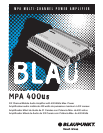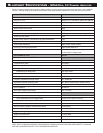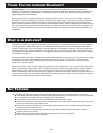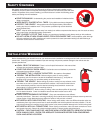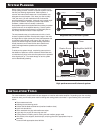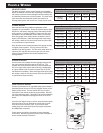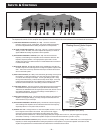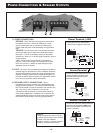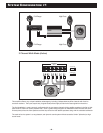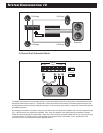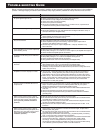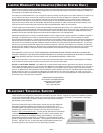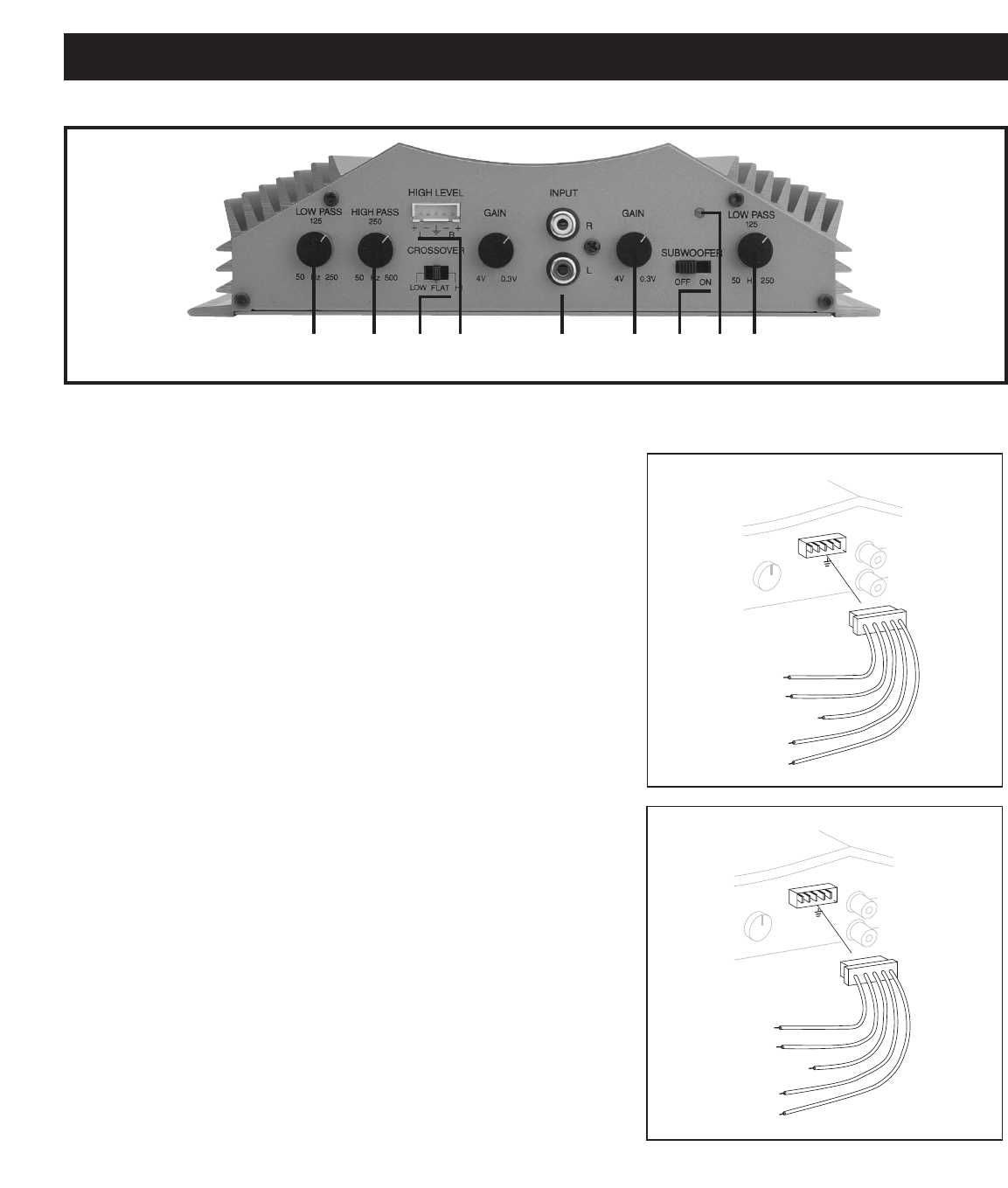
The inputs and controls for this amplifier are explained in the summaries below and reference the numbered call-outs above.
1.) LOW-PASS CROSSOVER CONTROL (ch 1 & 2) - Once the “crossover
frequency setting” is set to “LOW-PASS”, this control adjusts the frequency
for which all signals BELOW this setting are passed on to the speakers.
2.) HI-PASS CROSSOVER CONTROL (ch 1 & 2) - Once the “crossover frequency
setting” is set to “HI-PASS”, this control adjusts the frequency for which all
signals ABOVE this setting are passed on to the speakers.
3.) CROSSOVER FREQUENCY SETTING (ch 1 & 2) - the internal crossover
frequency control setting of the amplifier can be switched to either the “flat”
frequency response position or in a high-pass/low-pass mode. On this
amplifier, the choice is for either 50-250 Hz in LOW-PASS mode or 50-500 Hz
in a HIGH-PASS mode.
4.) HIGH LEVEL INPUTS - Should RCA cables not be available from the radio you
are able to tap onto the audio signal from the high level speaker outputs of the
radio. This is most commonly used when the amp is an add-on device such
as for a subwoofer system.
5.) INPUT GAIN CONTROL (ch 1 & 2) - This controls the gain setting on the input of
the amplifier. For high gain settings ( 0.3 volts), this says that it takes ONLY
0.3 volts to drive the amp to full output. For low gain settings (near 4 volts),
this says that it takes nearly 4 volts to drive the amp to full output. If the amp
is often going into distortion at only moderate volume settings on the radio,
rotate this control towards the 4 volts setting to reduce the distortion.
6.) LOW LEVEL INPUTS - The more commonly used inputs, these are connected to
the standard RCA outputs available on nearly all aftermarket radios today.
These lines are dedicated to left and right outputs of the radio, be it for front or
rear speaker installations. The input gain settings of the amplifier (0.3 - 4
volts) are referenced to these inputs.
7.) INPUT GAIN CONTROL (ch 3) - This controls the gain setting on the input of the
amplifier. For high gain settings ( 0.3 volts), this says that it takes ONLY 0.3
volts to drive the amp to full output.
8.) CROSSOVER FREQUENCY SETTING (ch 3) - the internal crossover frequency
control setting of the amplifier can be switched to either the “flat” frequency
response position or in low-pass mode, 50-250 Hz.
9.) POWER “ON” LED - This light will turn on when the amplifier receives a +12 volt
turn on signal from the radio in the vehicle. The input line to the “trigger”
connection must be properly connected to the radio’s trigger line which is
often also the power antenna line. If the amp is properly wired, but the light does not turn on, verify the trigger line is properly
connected, is receiving +12 volts, and the speaker outputs are not shorted to themselves or ground in any way.
10.) LOW-PASS CROSSOVER CONTROL (ch 3) - Once the “crossover frequency setting” is set to “LOW-PASS”, this control adjusts the
frequency for which all signals BELOW this setting are passed on to the speakers. The power and speaker connections for this
amplifier are explained in the summaries below and reference the numbered call-outs above.
INPUTS & CONTROLS
– 7 –
1 102 3 4 5 6 7 8 9
HIGH-LEVEL – INPUT
R
L
GAIN
MIN
MAX
+
+
-
-
GREEN
GREEN-BLACK
GREY-BLACK
GREY
(NOT USED)
LEFT (+)
LEFT (–)
RIGHT (–)
RIGHT (+)
HIGH-LEVEL – INPUT
R
L
GAIN
MIN
MAX
+
+
-
-
GREEN
GREY
LEFT (+)
RIGHT (+)
RADIO CHASSIS GROUND -OR-
COMMON SPEAKER GROUND
GREEN-BLACK
(NOT USED)
GREY-BLACK
(NOT USED)
"Floating Ground" Radio Outputs
"Common Ground" Radio Outputs
High Level (Speaker Input) Wiring



